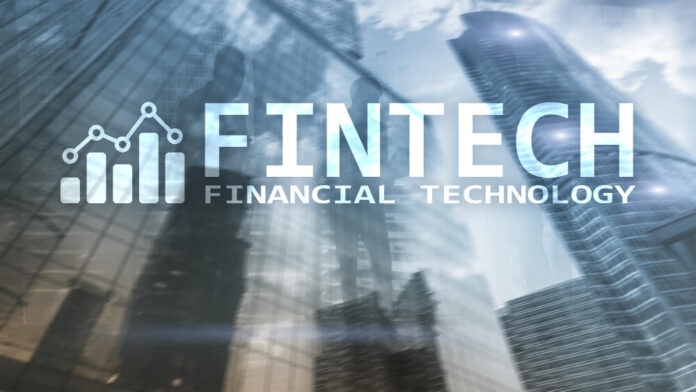The emergence of financial technologies has become a large-scale and significant event. People all over the world got the opportunity to view the amount of money in their account at any time, as well as make purchases online at any time of the day.
Today, these services remain indispensable, but the potential of fintech is being revealed more and more as the day passes. The industry is developing by leaps and bounds, providing new advanced opportunities for both individuals and companies around the world.
The success of fintech applications and opportunities attracts a lot of people who want to invest in it. Four years ago, investments in this industry reached over $55 billion. China alone has invested more than $25 billion in total. In 2020 there was a drop due to the global pandemic, but things are looking up after it. The industry-leading technology is artificial intelligence, with a market share of over thirty-eight percent in 2019.
The range of services that fintech will develop and modernize over the years will only increase. This makes us only closely monitor the trends that change from year to year. Companies around the world are rapidly embracing the use of fintech software development services, enabling them to improve business operations, implement new business models, secure sensitive data, and more.
Perhaps you have been enthusiastic about this industry and wondering lately what are the popular trends happening right now and the ones to look out for in the coming months, you are not alone. Here are some of the trends we can see in Fintech this year.
Growing Demand for Virtual Bank Cards
One of the successful innovations of neobanks was the introduction of virtual bank cards that can be used by all customers without any limitations. If this used to be an advantage for neobanks, how many traditional ones are trying to keep up and not lose their competitive advantage?
They can be used in the same way as traditional ones, only they do not need to be kept in a wallet. This reduces the risk of customers encountering scammers.
Virtual cards have been upgraded with “disposable” alternatives offered by some banks. This gives customers 100% confidence in the safety of their data. After each transaction, the data of such cards is updated, so attackers may not even try to take possession of the data.
Exclusion of Third Parties from the Service Buy Now, Pay Later
When this service became available to customers, it was a breakthrough. However, over time, each technology reveals some drawbacks. Merchants started making a lot of sales and also saw a significant drop in cart abandonment. However, in the matter of loan recovery, clients had to interact with third-party companies, as well as return a commission.
Now we can observe the updated version of the service. Third parties are excluded from this chain, so sellers interact directly with buyers. Merchants can offer buyers an advanced loyalty program that will simultaneously remind them to pay back the loan, as well as offer individual discounts for buyers on future purchases.
Buying Property with Digital Mortgages
Proptech has continued to gain popularity since its launch. In the United States of America, over 70% percent of all loans are real estate mortgages. This area remains associated with a lot of bureaucracy, which is why it is incredibly attractive for the fintech industry.
The main advantage is that the process of obtaining a digital loan for real estate is significantly reduced. Platforms such as Molo, Lendage, and Money Park offer self-service to customers. They are developed based on AI as well as machine learning.
These technologies calculate risks in a matter of minutes and also perform all the operations that can take several hours in a conventional bank.
The Rising Popularity of Stablecoins
The level of confidence in cryptocurrencies is falling significantly, especially after the catastrophic collapse in the value of digital currencies last year. As they say, “That closed door just means that another one will open soon enough”.
So, over the past year, the popularity of stablecoins has begun to grow rapidly. They offer transparency as well as stability, which serves as a solid factor for creating more decentralized financial systems.
Stablecoins are digital assets other than Bitcoin. There are many of them in the market already with unique features and benefits. From Ethereum, the leader of them all to Ripple, Cardano, and even to meme coins like Dogecoin.
This year we will see a lot more fintech products based on these coins. Companies that recognize the attractiveness of stablecoins will seize the opportunity to secure a competitive advantage.
A Wide Range of Applications of Artificial Intelligence and Machine Learning
The global pandemic has led to the rapid adoption of artificial intelligence and machine learning in many business processes. E-commerce has begun using these technologies to offer chatbots to customers, improving the customer experience and reducing the burden on merchants.
However, the potential of these technologies is beginning to be widely used in the field of fraud detection. Technology algorithms can help prevent malicious attacks as well as assess risks. They quickly analyze many factors, which allow companies to prevent attacks that can cause an irreparable blow.
Final Note
The last few years have not been entirely successful for fintech. However, the full potential will only be revealed in the future, which will bring even more investment in the industry. Companies that keep their finger on the pulse will be able to achieve success.
If they analyze current trends in the field of fintech as quickly as possible and wisely implement them in internal business processes, then companies will be in the lead.
We have shown you some of the trends that are on the rise in the industry, it is now left to you to leverage them to your advantage. Don’t just watch the industry evolve and grow, be a part of the revolution!
















